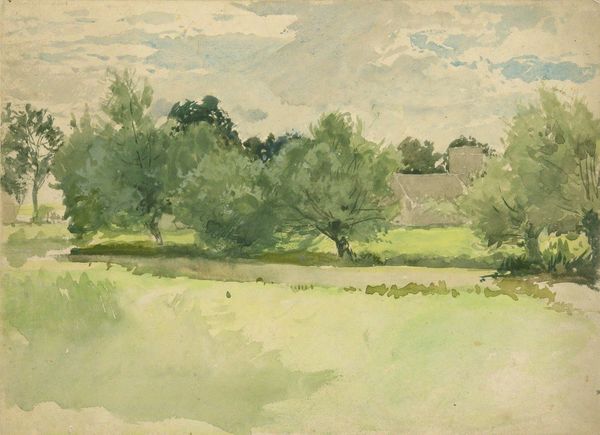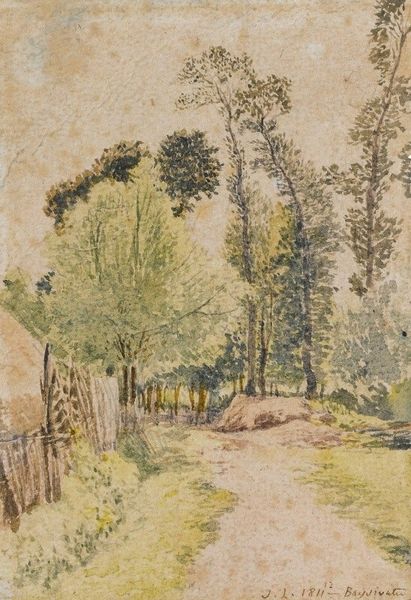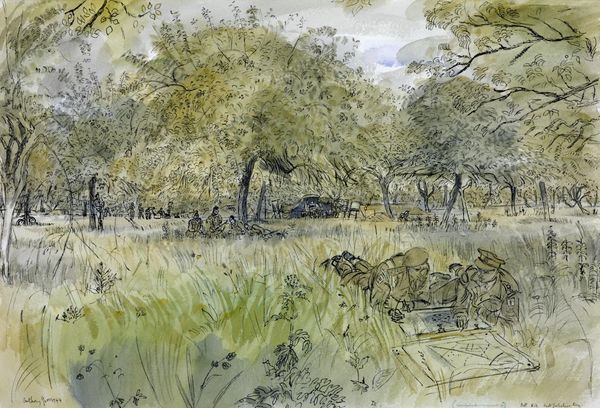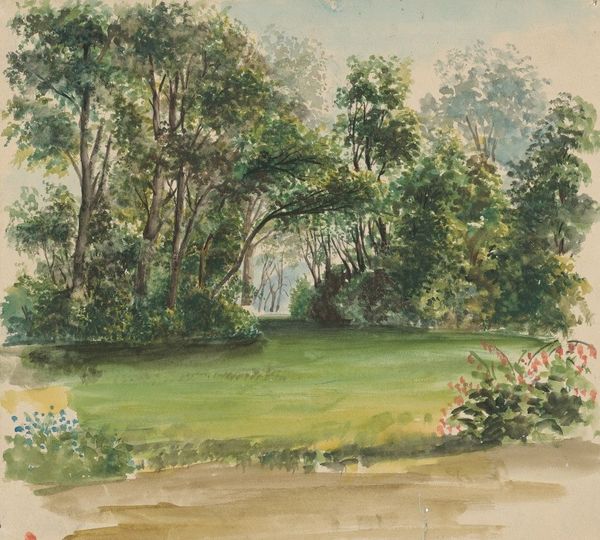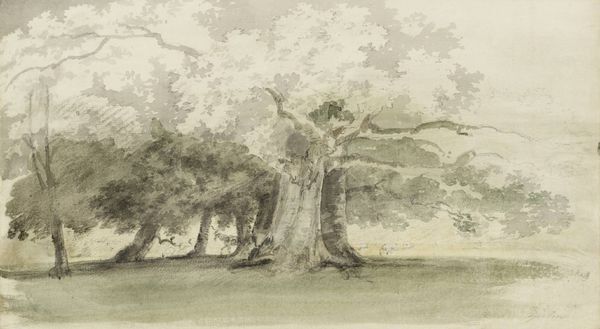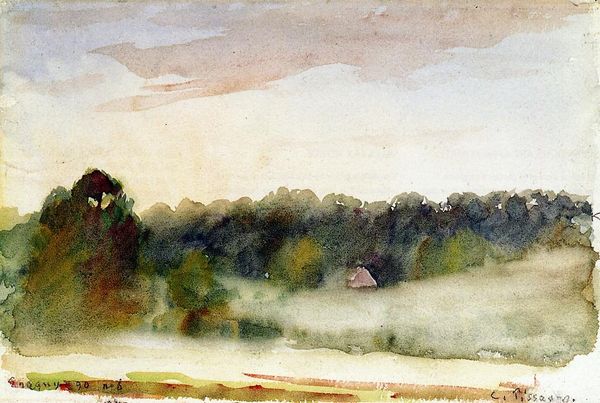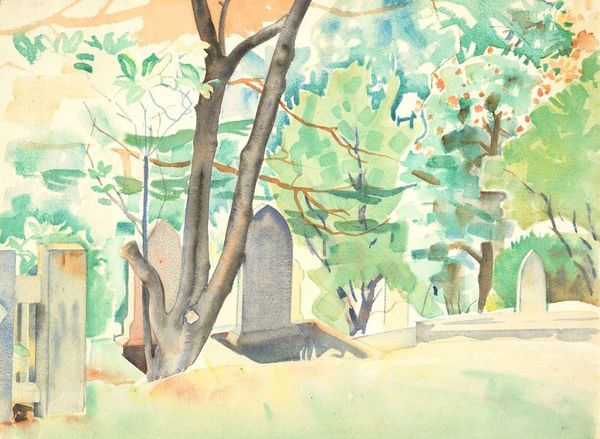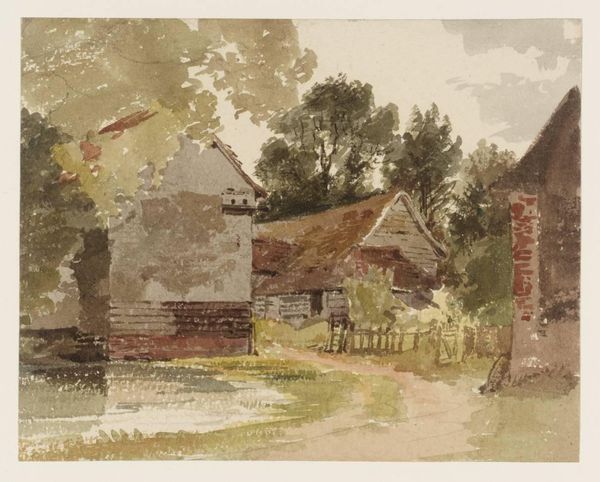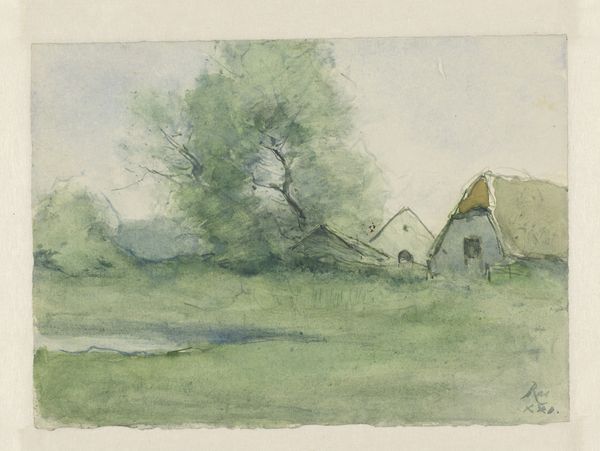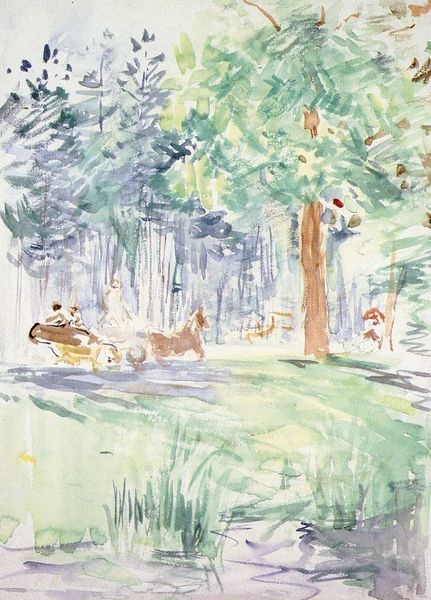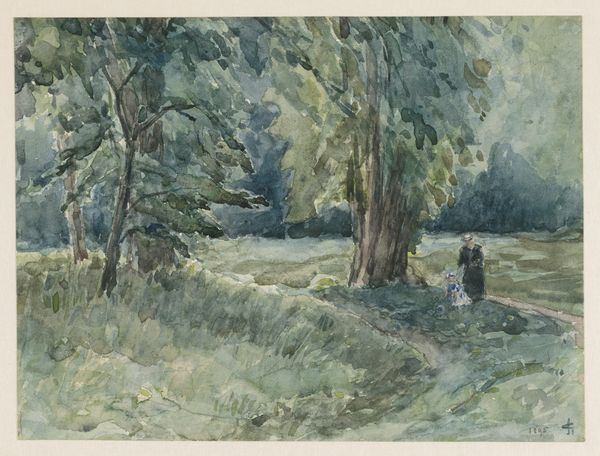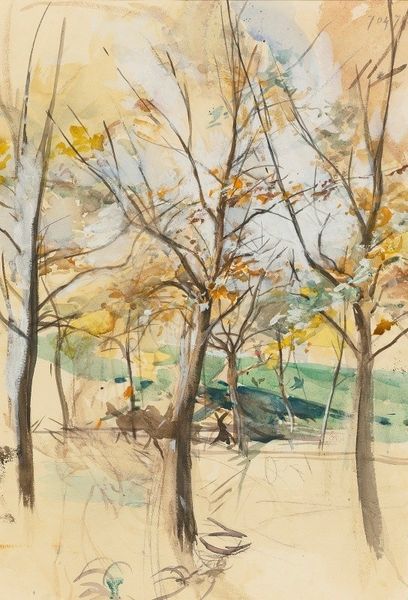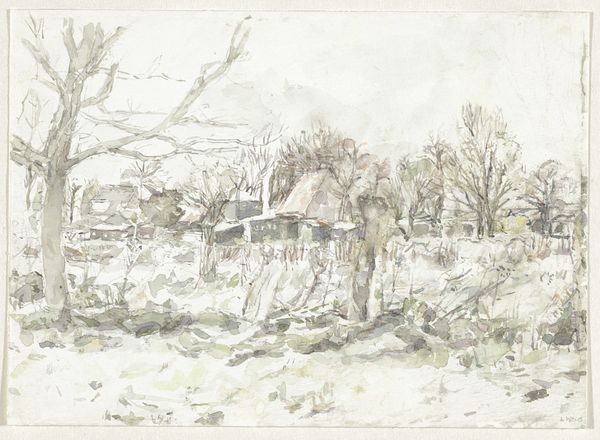
Copyright: Public Domain: Artvee
Editor: So, here we have Berthe Morisot’s "Paysage," painted in 1867 using watercolors. The scene feels so dreamlike. What I find striking is how the figure seems almost absorbed by the landscape, a little bit like a memory. How do you interpret this work? Curator: Indeed, a very evocative piece. The figure and landscape melt into a shared atmosphere, almost a collective consciousness of the space. What repeated shapes do you see creating rhythm? Note the triangular gables of the buildings echoed by the woman's bonnet and skirt, anchoring her within the architecture, while the round bushes mirror the canopies of trees to the right of her. Editor: I hadn’t noticed those visual echoes! Does this mean the woman is more a symbolic representation of domesticity than an individual portrait? Curator: Perhaps both. Morisot employs watercolor, allowing light to permeate and imbue a delicate ephemerality, which becomes an indicator of a fleeting impression. But tell me, what of the contrast between the very solid, sharply outlined trees, like the birch in the immediate foreground, and that same fleeting sense in the central figure? Editor: Maybe it speaks to the duality of nature: its permanence, yet also its constantly changing light and shadow? It makes me think of the ways we also try to leave lasting marks. Curator: Precisely. Notice how the woman's labor, rendered almost invisible by the watercolor's gentle hues, blends into the eternal, yet ever-shifting natural cycle. This work speaks volumes about memory, presence, and the dance between them. Editor: I see now! Thank you. I'm beginning to appreciate the symbols and visual language hidden beneath this watercolor's gentle surface.
Comments
No comments
Be the first to comment and join the conversation on the ultimate creative platform.
